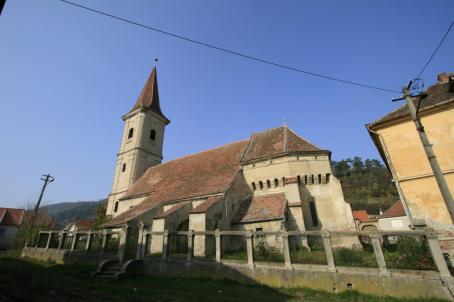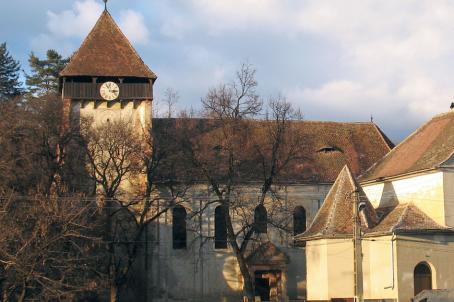Ruşi Fortified Church

The land on which the fortified church in Ruşi was built was not very merciful to the first building erected in the Catholic time, which collapsed and was replaced by a new church in 1636. Despite many repairs, the second church also collapsed in 1780. Still the weak foundation soil, as with the well-known tower of Pisa, will bring fame to the actual church erected in 1782, whose bell tower has a tilt of 1,50 m.
The hall church with square chancel and polygonal closure is home to many valuable Baroque pieces such as the 1641 altar, the 1764 canopy of the pulpit, and the 1805 organ. In 1785 Daniel Knobloch painted the railing of the gallery with Saints and the village’s coat of arms held by two men wearing traditional costumes from Ruşi.
About this building
For more information visit on this building visit https://kirchenburgen.org/en/location/reussen-rusi/





